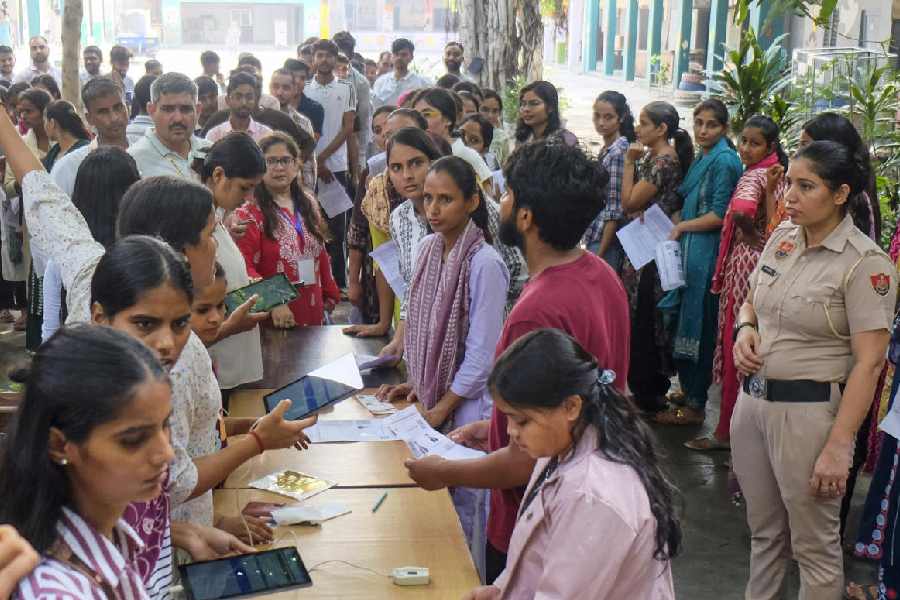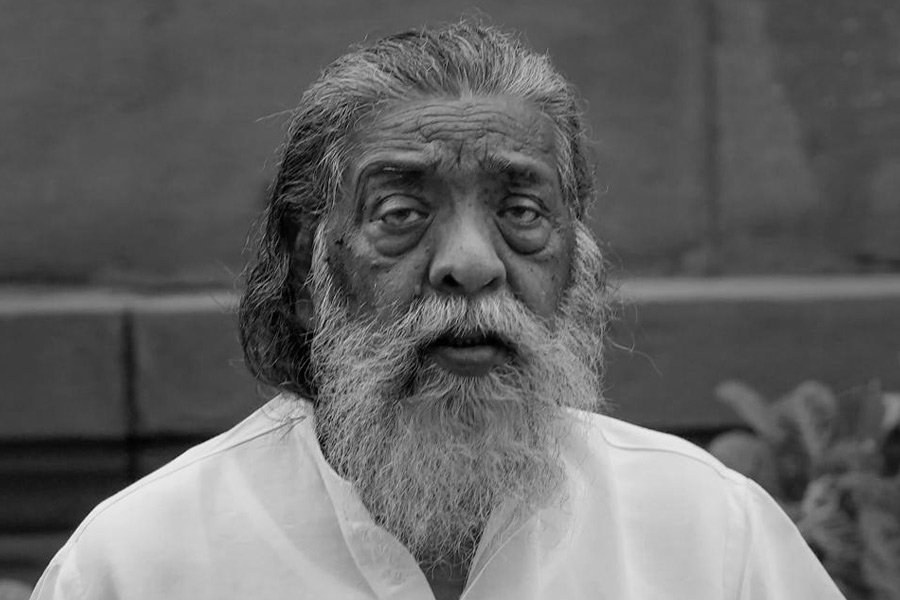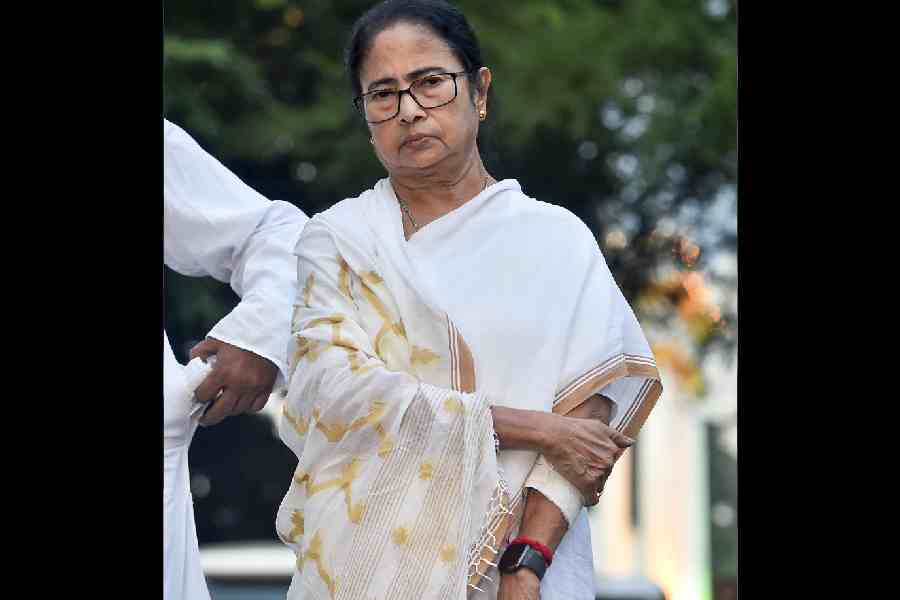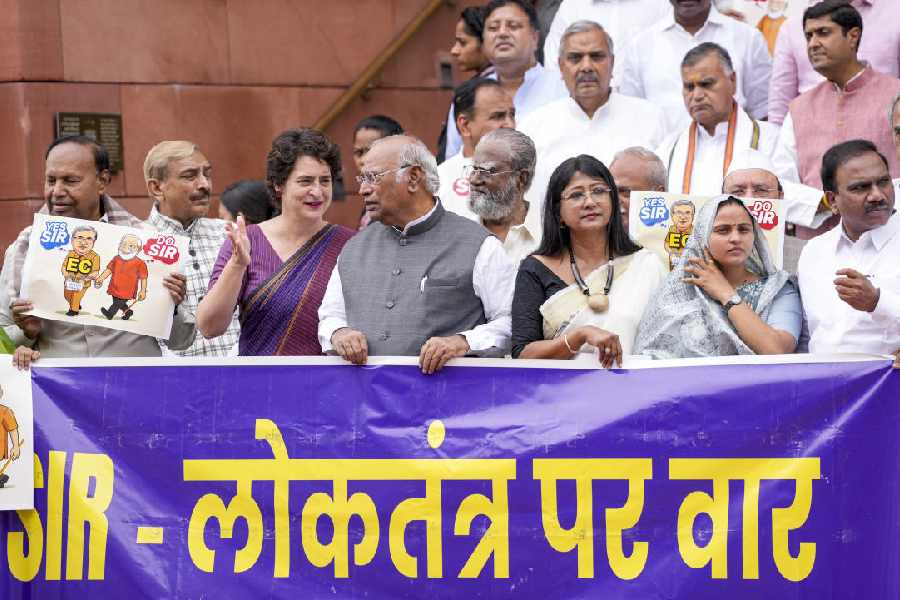Ranchi, June 29: Meet Ranchi, the national topper.
On January 1, when the Centre’s “game-changer”, the direct benefit transfer (DBT) scheme via Aadhaar, officially rolled out in 51 pilot districts across India, Ranchi was among the bottom of the basket with 244 beneficiaries. Today, with direct subsidies amounting to Rs 4 crore transferred to 13,378 beneficiaries (till June 20), Ranchi stands at number one.
Arvind Prasad, additional director general, Unique Identification Authority of India (UIDAI), Jharkhand in-charge, who attended the core meeting at the national capital recently, said after figures of all DBT districts were tabled, Ranchi was found to have outperformed 50 others. “It is a proud moment for us. I have already sent an email to Ranchi deputy commissioner’s office, congratulating Vinay Kumar Choubey and his team for the good work,” he said.
So far, authorities in Jharkhand don’t know about the comparative performance of other districts, including those of the more developed states such as Maharashtra or Karnataka.
A delighted deputy commissioner Vinay Kumar Choubey immediately credited “teamwork” for this success. “Having the right team working on a common agenda was a daunting task. An action plan was evolved, which we kept fine-tuning based on our daily experiences. The writing on our wall is no ifs and buts,” he said.
On money disbursement, Choubey said over 95 per cent of the 2012-13 financial year’s target had been achieved. The 13,378 beneficiaries registered under direct benefit transfer in Ranchi comprised people under 13 schemes.
These included pre and post matriculation scholarships for SC, ST and OBC candidates, Janani Suraksha Yojana, National Means-cum-Merit Scholarship, pensions, among others.
“Obviously, as new beneficiaries keep coming, the figures change daily,” said the DC.
Two mammoth welfare initiatives are in the process of getting tagged with DBT — the Centre’s flagship Mahatma Gandhi National Rural Employment Guarantee Scheme and National Social Assistance Programme (NSAP).
This means the number of persons under direct benefit transfer will grow exponentially.
“We are working hard on it. So far, we have managed to collect data of around 65,000 beneficiaries under MNREGS and 35,000 under NSAP. Now, our job is to link them with their bank accounts. From July 1, special month-long camps will be set up again to bring those without Aadhaar card under the fold of the UIDAI,” said Choubey.
The key to DBT is through Aadhar card or unique identification number (UID). Under the system, cash subsidy gets transferred directly to beneficiary bank accounts mapped with UID.
The system works in two ways — curbing corruption across layers of bureaucracy and eliminating fake beneficiaries.
Till June-end, out of Ranchi’s 29.12 lakh population, over 80 per cent has come under Aadhaar enrolment. The rural coverage is 68 per cent. In urban areas, it is over 87 per cent.
“Penetrating rural areas was a major concern. But gradually, we improved by launching campaigns at blocks and panchayats. Aadhaar caught on when people realised fake identities would be exposed. For example, out of total enrolment in one area, the number of beneficiaries came down by 30-35 per cent as Aadhaar required physical verification,” Choubey said.
He added that striking coordination with banks wasn’t easy.
“Banks were reluctant to come on board. We held workshops and meetings to convince them they had no option but to follow rules. They understood it finally,” he said.
On why Ranchi bucked the chalta hai attitude, Ravi Shankar Verma, ADM (Naxalite) said the team stuck to targets. “Every block level officer got targets. Their superiors, who monitored progress, reported directly to the DC,” he said.
Verma added there was pressure of accountability. “Every two days, there were reviews with all block and panchayat level representatives. Pressure, accountability and latest ground-level data meant better performance,” he added.
Insiders added the hidden challenges were many. “Lack of skilled manpower, infrastructure and others were hurdles. If we required over 300 machines for assignment UIDs and making enrolments, we were always short by 15-20 per cent. There were too few skilled data entry operators. Technically, each and every one across the district administration hierarchy worked overtime, chipping in one way or the other,” an official said.










